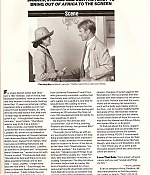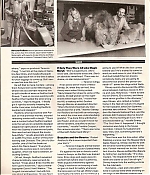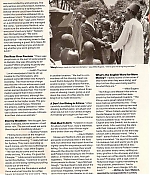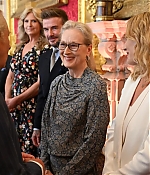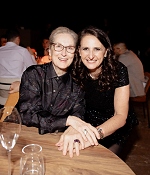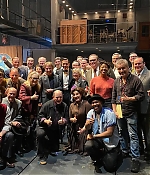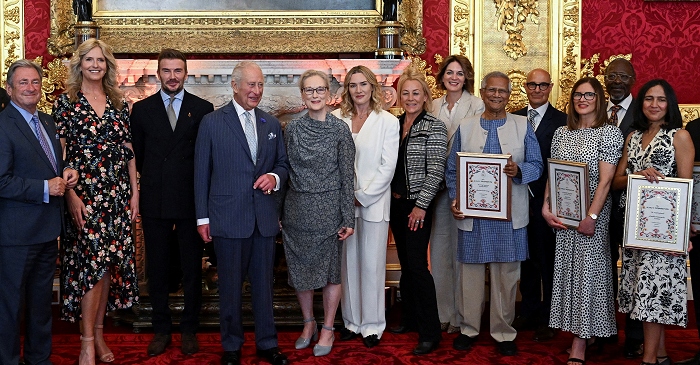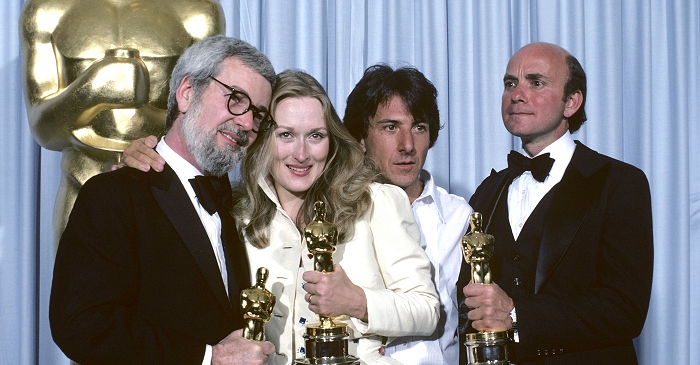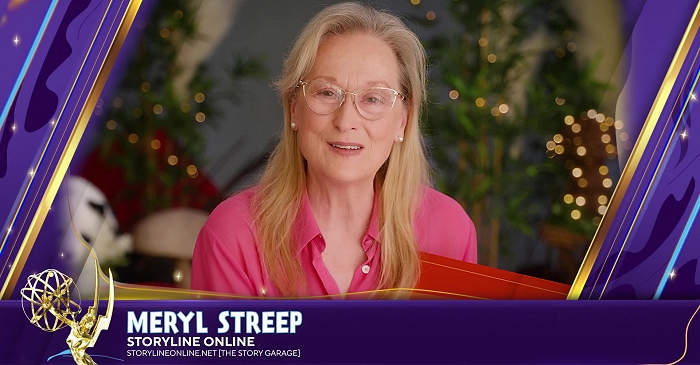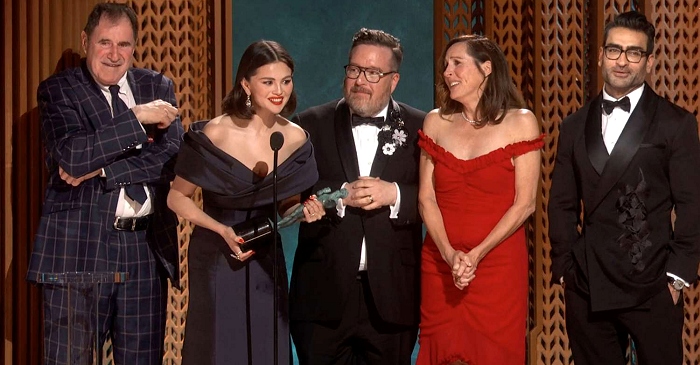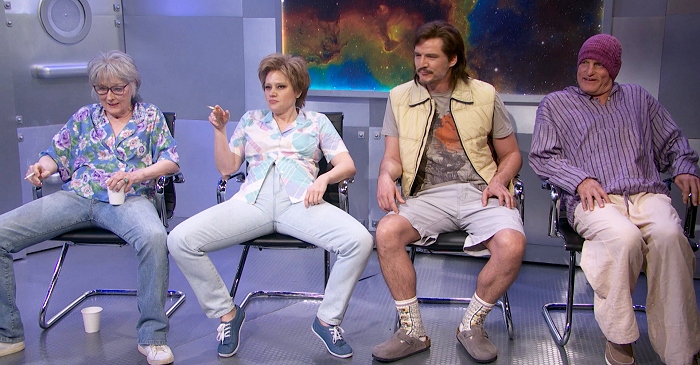|
Simply Streep is your premiere online resource on Meryl Streep's work on film, television and in the theatre - a career that has won her acclaim to be one of the world's greatest living actresses. Created in 1999, Simply Streep has built an extensive collection over the past 25 years to discover Miss Streep's body of work through thousands of photographs, articles and video clips. Enjoy your stay and check back soon.
|
|
Streep and Redford Battle Lions, Snakes, Storms and Controversy to Bring Out of Africa to the Screen
People Magaznie ·
January 20, 1986
· Written by Carol Wallace
|
For years Danish writer Isak Dinesen’s 1937 memoir, Out of Africa, had stumped Hollywood: How do you translate one woman’s richly poetic feelings about her 17 years on a Kenyan coffee plantation into a suitable screen narrative? Even Sydney Pollack, 51, who directed the $30-million film, had tried 12 years ago to develop a script and given it up. “I thought that it was too delicate,” says Pollack, “that there was no way to do it as a movie.” More recently, journalist-turned-screenwriter Kurt (Absence of Malice) Luedtke, 46, wrote a script based on current biographies of Dinesen (whose real name was Karen Blixen) and her British lover, Denys Finch Hatton. Now here was something Hollywood did know how to do: a love story. Luedtke, an admirer of Dinesen and “a hopeless Meryl Streep fan,” wrote his script with Streep in mind. “If someone had said, ‘We talked to God and there is no possible way Meryl Streep will do this role,’ ” says Luedtke, “I might have said the hell with it.” Surprisingly, he tried to dissuade Redford from playing Finch Hatton. “I didn’t think the role was big enough for him,” he says. A few days later Luedtke received a call from Universal President Frank Price, who graciously reminded Luedtke that the money was coming out of Universal’s wallet, not Luedtke’s, and that he should leave the casting to them.
Meanwhile Pollack worried that the first cut of Out of Africa was boring and overlong at 220 minutes (the final cut runs 150 minutes) and told his family no one would pay to see it. So much for the director and screenwriter: Out of Africa, starring Redford and Streep, has grossed $26.7 million in three weeks. Thus with Out of Africa, as with every successful movie project, the only thing predictable has been unpredictability-a fact nowhere more evident than on location in Africa. If the film is, as the New York Times believes, “excessively genteel,” the making of it was not. “I always expect things to go wrong and they usually do,” says Pollack, who has directed 14 movies, including Tootsie and The Way We Were, but never before had to master the kind of logistics required for a four-and-a-half month shoot that ventured from Nairobi to areas accessible only on foot. There were maddening downpours in Kenya’s customarily dry season, charges of racism against the filmmakers in the local press and wild animals with little respect for the privacy of a tent. Pollack also had the unenviable job of keeping his superstars, each with a hefty ego, happy and productive-not to mention satisfying the demands of the 100-member international production crew and the nearly 10,000 actors (most of them African extras from the Maasai and Kikuyu tribes, who spoke little or no English).
To find out about the funny, unglamorous, poignant and occasionally acrimonious scenes behind the scenes of Out of Africa, PEOPLE interviewed dozens of the actors and crew for their recollections. As British actor Michael Gough, who plays Lord Delamere, puts it: “I don’t think any of us were quite the same people when we came out as when we went in.”
Love That Bob: “He’s smart, shrewd, canny and you can’t sneak anything by him.”
-Kurt Luedtke
Even in deepest Africa, Redford, 48, was hard-pressed to find the privacy he covets so dearly. “Bob’s big problem is that he’s recognized everywhere,” says co-producer Terence Clegg. “I met him at the plane in Nairobi a few times, and maybe 20 people would approach him in the time it takes for your luggage to come up. But I never saw him lose his cool.” He left that to mere mortals-among them Kenya-born actor Mike Bugara, whose role as a servant required him to spill a bottle of wine on Redford and Streep. “I was so nervous working with Redford that I spilled the wine wrong six times,” reports Bugara. “I finally got it right by actually dropping the bottle. Everyone, including Redford, laughed and clapped.” Redford, who had worked with Pollack on five previous movies, enjoyed releasing tension with a laugh. “There was a moment when Redford walked onto the set and in complete deadpan slapped an open peanut butter sandwich into Sydney’s outstretched palm, then went out and played the scene beautifully,” recalls associate producer Judith Thurman, author of the prize-winning Isak Dinesen: The Life of a Storyteller, one of the five books on which the film is based. “Everybody behind the scenes was in convulsive laughter, which we had to swallow, including Sydney.” Off set, though, Redford remained characteristically reserved and detached. “It was about three months before I got to know him,” says cinematographer David (Yentl) Watkin. “The longest conversation I had with him was about archaeology. He was fascinated by the mystery of Stonehenge.”
If Only They Were All Like Magic Meryl: “She’s a superb pro. She’s never late. She knows every line. She’s an absolute sweetheart. There was no drama, no star temperament.”
-Terence Clegg
If her peers weren’t fans of Meryl Streep, 34, when they arrived, they clearly were when filming ended. “Meryl loaned her shawl to some of the elderly, ill-clad women on the night-shoots when it got cool,” recalls Norma Hill, a makeup artist. Gushes George an assistant director: “She’s the kind of woman any man would want for a wife.” Neither Streep nor Redford arrived with an entourage, for which the crew was understandably grateful. “I’ve done films with Burton and Taylor, and you couldn’t move for all the handlers, chauffeurs and accountants,” recalls Freddie Cooper, the camera operator. “There was none of that with Robert and Meryl.”
Beauties and the Beasts: “Robert Redford’s life is more important than your lion’s.”
-Terence Clegg to animal trainer Hubert (Doctor Dolittle) Wells
It’s against the law to disturb a wild beast in Kenya, so the film’s six trained lions, three dogs and eagle were imported from (where else?) California. Wells argued vehemently against Clegg’s insistence on keeping a loaded gun on hand for safety whenever the lions were on the set. Wells’s logic eventually prevailed, but not without a lot of hard feelings. “When are you going to use it? When the lion comes toward you? He’s trained to come toward you and move in your direction. And God forbid if the lion knocks somebody down, are you going to shoot the lion and kill the person beneath it?” asked the disgruntled Wells. Streep quickly discovered the difference between making a movie in Africa and, say, Hollywood. “I went to take my son [Henry, 6] to school, and there were seven giraffes in the driveway,” says Streep, who rented a modern home in the Nairobi suburb of Langata for her husband, artist Don Gummer, and their two children. The area borders the Nairobi National Park, and the animals didn’t always observe boundaries. “Every morning at 5 a.m. the lions would wake up,” recalls Streep. “The first time it happened I thought someone was dying in the house next door. I shook my husband and said, ‘Don, Don, something terrible’s happening.’ ” Then there was the time when, after finishing a scene near the Maasai Mara Game Reserve, Streep wanted to walk the several hundred yards back to her tent. Pollack wanted her to ride. Assistant director Menoe settled the dispute by telling her, sardonically, “It’s okay, madam. The leopards here don’t have teeth and claws so you’ll be all right.” Streep leaped into the waiting vehicle for the ride back. Everyone-cast and crew alike-lived in canvas tents while shooting on the edge of the Maasai reserve near the Tanzania border, and the campsite was surrounded by wild animals. The only serious security breach, however, was occasioned by a spitting cobra (whose venom could have blinded its victim) that somehow slithered into a soundman’s tent. “Everybody freaked out a bit after that,” says John Fletcher, a professional guide who managed the camp, “particularly Redford, who made sure the attendants zipped up everyone’s tent very tight.” Remembers Michael Gough: “We were very moved by the [Maasai reserve] experience-like walking down to the river and seeing a great, dirty hippo 50 yards away looking at you and deciding whether you were going to be lunch.”
The Roar Over Racism: “There was skepticism on the part of some people in Nairobi. How was this going to be treated? Were we going to glorify the good ol’ days of colonialism?”
-Judith Thurman
Local newspapers tried to stir up trouble for the filmmakers, who pumped some $8 million into Kenya’s economy. The most serious charge was that the African extras were paid about $12 a day each, while the white extras earned double that. The moviemakers argued that it was a matter of supply and demand, although the salaries of the African extras were later raised to the higher scale. The government-owned Kenya Times led the attacks, calling Dinesen a “downright racist” who believed that “African culture could not elevate Africans from their status as animals.”
Stormy Weather: “We thought January, February, tourist season-it will never rain. The second week we were there began a monthlong deluge.”
-Sydney Pollack
Filming took place at the height of the East African drought, so the rains were a mixed blessing. “I really felt bad for Sydney. They were spending so much money, and he was suffering but he never yelled,” says Mike Bugara. “The rain would come and he would smile and say, ‘It’s okay. It’s good for Ethiopia.’ ” Adds second assistant director Roy Button, “I seemed to spend weeks on end doing nothing but pulling trucks out of the mud.” At one point the filmmakers waited three and a half months for coffee beans to blossom for one scene. They did at last, but only when the crew was in another location. “We had to commandeer all the shaving cream we could find in Kenya for this big panoramic scene,” says Shane Rimmer, who played Dinesen’s foreman. “Everybody was enlisted with about three cans of shaving cream, going up and down the rows of coffee plants, dabbing it on to make blossoms.”
A Don’t for Dining in Africa: “After carefully avoiding the local water and drinking bottled water, we all got sick when we put ice in our drinks at night. Everybody got caught on that one.”
-Shane Rimmer
Club Med It Ain’t: “I’d listen to music for about a half hour. I had a Walkman, but the sounds of the African night were better than any Wagner.”
-David Watkin Streep and Redford often ate dinner alongside everybody else in the food tent, but otherwise kept apart from the nightly campfire sing-alongs and storytelling. On other evenings they would dine with the director (both Redford and Pollack tried keeping to the Pritikin diet) or, in Redford’s case, host get-togethers. “Robert would have two or three people to dinner,” says Michael Gough. “He liked best to talk about the old days of theater. It was funny, this enormous megastar, loving to talk about foul-ups in the theater or on early TV. We had lots of laughs.”
What’s the English Word for More Money? “I asked some of the extras if they knew what they were doing, and they told me they were being paid to be what they are.”
-Mike Bugara
The Kikuyu and Maasai tribe extras seemed more bemused than awestruck by the Hollywood invaders. “The Kikuyu were great natural mimics,” says makeup artist Norma Hill. “They would come into the makeup tent and act out the whole scene from the day before.” When Pollack wanted an authentic Maasai to stand vigil in Finch Hatton’s funeral scene, an assistant found a suitable local. He spoke no English and little Swahili, but he was a quick study. After watching the stars with their makeup artists and assistants, the extra arrived on his third day of work with a Maasai friend. “Who’s that?” asked Pollack. One of the assistants translated: “He says he brought his makeup man and wants you to pay him 50 shillings [about $5.50] a day.” History does not record Pollack’s reaction, but after heavy rains, spitting cobras, giraffes in the driveway and shaving cream on coffee plants, what could he say? Probably, with a sigh, a bit of Hollywood lingo roughly translating to “No problem, sweetheart. You’re beautiful, don’t ever change, let’s do lunch.”
Written by Carol Wallace, reported by correspondents in London, Los Angeles, Nairobi and New York


